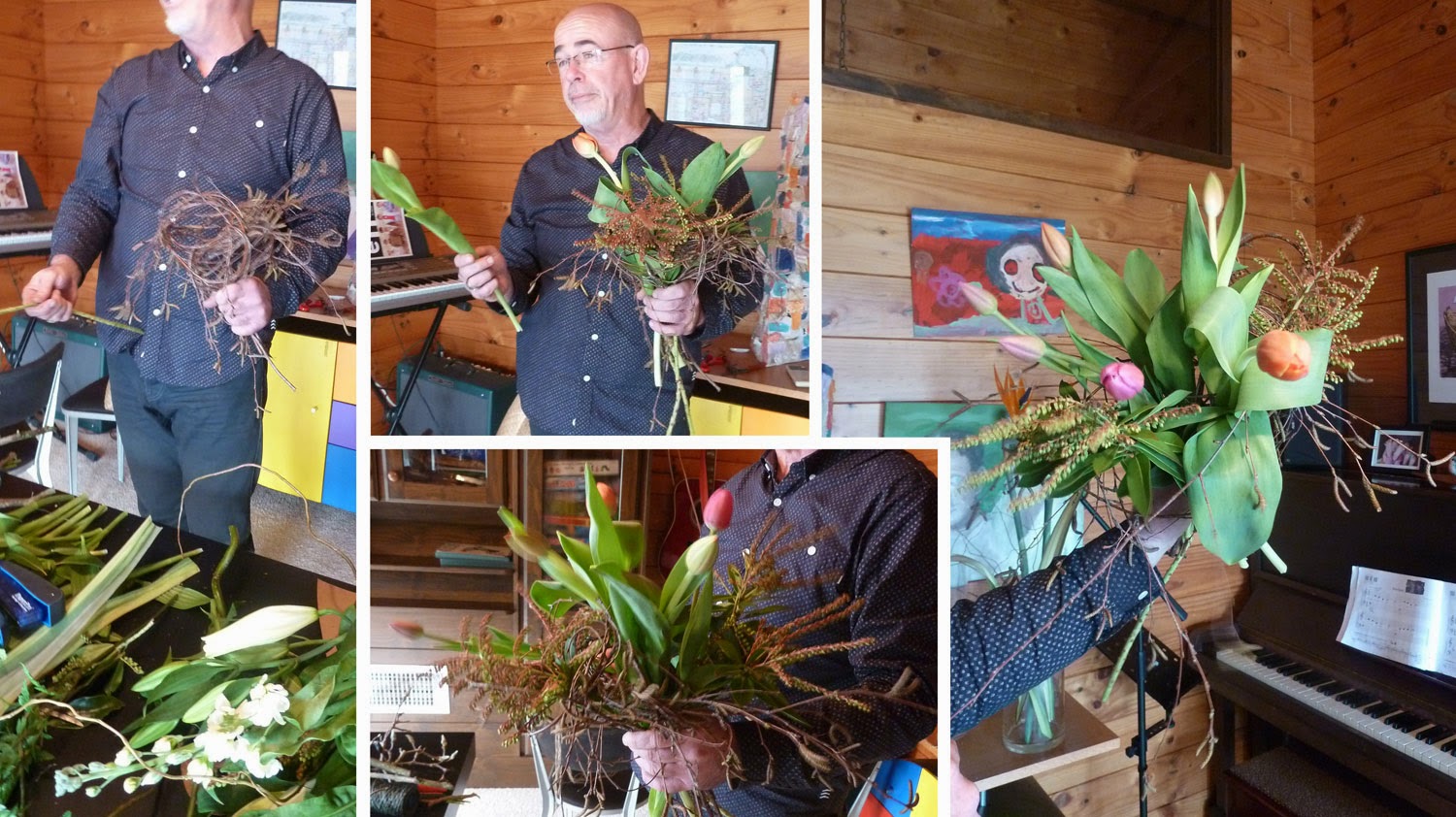Kokedama Workshop and a Xmas brunch at Becks's House
December 11th 2014
Fresh from her successful display at the Garden and Art Festival we were excited to be meeting Coraleigh from Pickled Whimsy and learning how to make our own Kokedama. http://pickledwhimsy.bigcartel.com/
Coraleigh explained that Kokedamas originated thousands of years ago as a form of Bonsai that was grown in a round pot until completely 'root bound' then the pot would be broken with the root ball intact and the plant could be hung and maintained like this. The full process would take many years.
Unlike Bonsais you can make a small Kokedama in a few minutes and it is a very enjoyable process. You can use many different plants and there were hundreds of different specimens hanging in Coraleigh's workshop to prove this. A small Fejoa tree looked festive with it gorgeous red flowers. Some of the Kokedama had been cultivated with moss on the outside which offered a different look. Most were hanging from the roof of workshop as this is the most common way to display them. We used a succulent to make our own Kokedama, as they require less maintenance than most other plants.
We each took a large handful of Sphagnum Moss patting it on a table to form a flat pancake shape, then we added a handful of potting mix and lastly our plant on the top. Next we scrunched the sphagnum moss into a rough spherical shape with the plant just poking out. Taking a piece of twine we bound the sphagnum ball, looping in a random pattern to create a firm ball. A few minutes later we had all completed our Kokedamas and were very proud of our efforts.
To water our Kokedamas we were advised to submerge them in a tub of water until they no longer floated, with the option of adding liquid fertiliser to the water. Coraleigh explained that the water and nutritional needs of a Kokedama were slightly less than a potted plant but more than a regular garden plant.
We also met Coraleigh's Dad David, who explained his latest garden project, the creation of a permaculture food forest. The aim of the food forest is for it to become self-sustaining, not requiring any fertiliser and very little weed control. It involves careful planning of a five layer forest. You draw out a grid with each intended tree's mature size mapped, so that their canopies will be touching when they are fully mature. Nitrogen fixing trees and plants are added to the forest to bring nitrogen back into the soil. It requires patience as it will be 5-6 years until the trees begin to reach their planned height. The aim is to have something fruiting almost all of the year so this is carefully factored into the plan. It would be interesting to return to the food forest in a few years to check its progress.
Our next stop was a Becks's lovely new home and large garden, for a delicious Xmas brunch. Her garden is in the planning stage, but with the hard landscaping completed. There are endless possibilities for different plantings and we will watch with great excitement. Thank you Becks for an excellent G3 adventure!
Paula














































